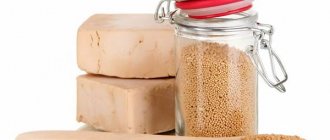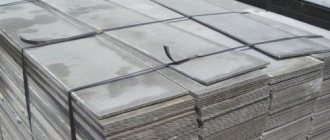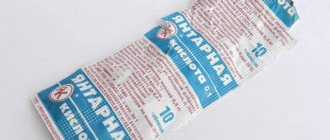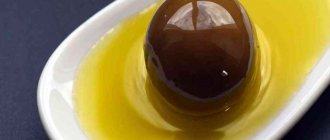Margarine is a mixture of vegetable and animal fats that are hydrolyzed. It was created by a French chef to replace more expensive butter. Nowadays, it is mainly used in the production of confectionery products. Its benefits and harms are a topic that has been touched upon by nutritionists and doctors more than once. Let's figure out why margarine is harmful to the human body? What is its use? And is it worth eating it at all?
Properties of margarine
Useful properties of margarine
Margarine. It is based on hydrogenated vegetable oils and also contains water, emulsifiers and flavorings. In many countries, margarine is the best-selling product of all edible fats. In addition, it is widely used in cooking and is included in a hidden form in many products.
The basis of margarine production technology is still the catalytic hydrogenation of unsaturated fats. When liquid vegetable oils are hydrogenated, the so-called lard is obtained, which is then used as the main component of margarine.
Spreads and baked mixtures. Spread (read “spread”) is “soft butter”, a food product containing a mixture of vegetable and milk fats. It spreads easily, even after cooling. According to Russian GOST, spreads are divided into three types:
- Creamy-vegetable ones contain more than 50% milk fat (they are closest to natural butter);
- Vegetable-cream contains from 15 to 49% milk fat;
- Vegetable fats do not contain milk fat (in fact, pure margarine).
It is very important which vegetable fats are used to make the spread. Fats from a mixture of palm and coconut oils contain almost no trans isomers, but hydrogenated vegetable oils already contain from 16 to 26 percent trans fats.
Most of us constantly use margarine during cooking, as well as as an independent food product. In a crisis, price plays a big role - margarine is much cheaper than butter.
Dangerous properties of margarine
There has been scientific controversy surrounding trans fats for a long time. Some scientists believe that trans fats do not pose a particular danger to the human body, while others argue that trans fats cause significant harm to our health.
By acting on cell walls, trans fat molecules make them hard. In turn, hardening of cell walls increases the risk of cardiovascular disease. In addition, trans fats increase the level of “bad” cholesterol in the blood serum, reduce the body’s defenses, and also negatively affect the quality of sperm in men.
Instead of margarine, doctors advise consuming traditional vegetable oils and butter, but within reasonable limits. You should also carefully read the labels of finished products (baked goods, cookies, chips, confectionery, semi-finished products and others) to see if they contain hydrogenated, that is, those very dangerous trans fats that transmit
In Austria, Denmark and Switzerland, trans fats are banned. In the United States, a ban on trans fats has been introduced in certain cities and states, in particular in New York and the state of California. Doctors from the British Faculty of Health have called on their government to ban trans fats.
The World Health Organization calls for a ban on trans fats in all countries.
Those who consume too much saturated fat, namely butter, also risk their health. Doctors believe that consuming saturated fats provokes the development of atherosclerosis, heart attacks and strokes.
From a consumer's point of view, margarine can be considered an ersatz butter. In common parlance and in hidden advertising, margarine is also often called butter (for example, “Light butter”), but in most countries it is prohibited by law to indicate the word “butter” on margarine packages.
Trans fats as the main disadvantage
The harm of margarine is due to the presence of trans isomers of fatty acids. In the early 2010s, many countries required manufacturers to indicate the amount of trans fat on packaging. In Russia, this example was followed only in January 2020: in a number of products in our country, a limit was set on the amount of trans fats.
It is believed that the dangerous dose for humans is less than 3 grams of trans fats per day. And according to the Federal Research Center for Nutrition and Biotechnology, a Russian consumes 3-4 grams of trans fats per day, which are found primarily in popular fast food, cookies, ice cream, glazed cheese curds, all kinds of baked goods, in a word, in everything that everyone loves to eat. as a snack between main meals.
Anyone who wants to maintain their health should minimize their consumption of foods with unhealthy fats. In addition to margarine, this includes fast food, chocolate, chips, popcorn, sauces, mayonnaise, confectionery and bakery products.
By the way, many products may not be labeled “trans isomers of fatty acids,” but this does not mean that they are not there. Pay attention to the synonyms: hydrogenated fat, hardened vegetable fat, saturated fats, frying fat, combined fat, margarine, solid vegetable oil, partially hydrogenated vegetable oil.
It is believed that the dangerous dose for humans is less than 3 grams of trans fats per day. And according to the Federal Research Center for Nutrition and Biotechnology, a Russian consumes 3-4 grams of trans fats per day, which are found primarily in popular fast food, cookies, ice cream, glazed cheese curds, all kinds of baked goods, in a word, in everything that everyone loves to eat. as a snack between main meals.
The history of margarine
It was invented in France at the end of the 19th century. The impetus was the French Industrial Revolution, which provoked a massive outflow of the rural population to the cities. This caused a critical drop in the production of natural cow butter on farms and its shortage. The cost of oil in Western Europe in those years became prohibitive. Emperor Louis III himself announced a reward for the creator of an affordable butter substitute for the poor and soldiers.
The winner of the competition was the chemist Hippolyte Mege-Mourier. In 1869, he invented a product that looked and tasted like butter and called it oleomargarine. The substance could be stored for a long time without refrigeration, without losing its properties and was much cheaper than the natural original. As a result of crystallization, the product acquired a pearl-pearl luster.
Initially, the technological process looked like this. The rendered animal fat, usually beef, was frozen and pressed through fabric filters. The cold-pressed liquid was mixed with milk, salt and ground cow udders and gizzards. Then everything was beaten until hardened, washed, dried and packaged in commercial containers. Margarine quickly gained popularity and was produced in a similar way until the early 30s of the 20th century.
We recommend reading: Glucosamine: instructions, indications, dosages and analogues, reviews
Over time, liquid vegetable and animal fats and oils have been transformed into solid plastic raw materials. Dyes and flavors appeared; instead of animal fats, coconut, palm, cottonseed, soybean and other oils of vegetable origin, as well as synthetic ones, began to be used.
Margarine is a cheap analogue of butter made from cow's milk. According to organoleptic indicators, some of its types are practically indistinguishable from the natural product. Due to the low cost of production, it has surpassed oil in terms of volumes of use in the food industry. Used in the preparation of baked goods, sweets and most semi-finished products. Therefore, it is necessary to know why margarine is harmful, how and for what purposes it can be used.
The horrors of hydrogenation
Margarine, which does not contain animal fats, has no cholesterol, and nutritionists always welcome such products. However, margarine cannot be called healthy, and the reason for this is the hydrogenation of vegetable oils. The process is accompanied by the formation of trans-unsaturated fatty acids, in which the hydrogen atoms are located on opposite sides of the CH=CH double bond, like the ends of the letter “S”.
According to medical observations, trans-unsaturated fatty acids damage arterial walls, cause cardiovascular and cancer diseases, Alzheimer's disease and even depression.
A margarine consumer can reduce the harmful effects of trans-unsaturated acids if he uses varieties with a high milk fat content: the more milk fat, the less hydrogenated fats and, therefore, trans isomers. The composition of vegetable oils is also important: palm and coconut oils form almost no trans isomers during hydrogenation, while in soybean and sunflower their content reaches 50%. Unfortunately, manufacturers do not always list the oils used on the packaging.
Another method is to replace hydrogenation with transesterification. Fats and oils are triglycerides - esters of glycerol and fatty acids. When a mixture of different fats and oils is transesterified, glycerides are randomly exchanged with fatty acids, causing their properties to change. The result is a plastic, homogeneous substance that contains virtually no isomers.
And finally, you can give up margarine altogether and switch to spreads.
How to replace margarine?
Any natural fat is preferable to artificial fat. Sunflower oil, which contains a lot of vitamin D, can be a good replacement. When replacing with liquid fats, their amount compared to the weight of margarine should be reduced by 2 times, that is, instead of 100 g of margarine, you should use 50 g of vegetable oil. Substitutes for margarine in home cooking:
- for baking, when preparing dough - butter;
- during baking itself, to lubricate the baking sheets, use butter together with sunflower, olive or corn oil, but always refined, in a 1:1 ratio;
- for frying flour products, seasoning soups, stewing vegetables and meat - refined vegetable oils separately or together with butter; if the dish does not belong to sweets, then you can use rendered animal fat - beef, pork, lamb;
- when frying meat and vegetables - any types of liquid vegetable and animal fats, as well as solid animal fat (pork, fat tail, camel).
Milk and cream margarine: composition, calorie content and scope of application
Table variety is a separate variety, which, in turn, is divided into two types. Both products differ in taste. Therefore, recommendations for use in culinary areas are different for them.
Creamy margarine
In the production of this product, fats of animal and vegetable origin are used. An essential component of creamy margarine is cow's milk, the mass fraction of which should be approximately 25%. The calorie content of this variety is 743 kcal/100 g of product. Ideal for making sweet pastries and thick creams . According to reviews, it goes well with sandwiches.
Milk margarine
Despite its promising name, it does not contain milk. This is its main difference from its creamy counterpart. The composition is based on animal fats and protein compounds. The calorie content of the milk variety is 770 kcal/100 g. The product is suitable for making bread and savory pastries. If necessary, can be used in confectionery products.
Potential benefits of margarine
Despite all the calories and potential danger, the product can be beneficial for the body. If you choose and store it correctly, use it only in minimal quantities and only according to indications, you can count on a number of positive effects:
- The abundance of minerals and vitamins in the composition of the mass will increase the nutritional value of the final products.
- Margarine contains not only unhealthy fats, but also unsaturated fatty acids. In small quantities they have a positive effect on blood composition.
- The high calorie content of margarine dishes allows you to quickly satisfy your hunger, increase your energy level and fight physical fatigue.
A high-quality product based on unmodified vegetable fats even lowers the level of bad cholesterol in the blood, reducing the risk of developing emergency situations. There are no standards for the use of raw materials; you just need to monitor your condition and make adjustments to the dosage.
What are the consequences of frequent consumption of margarine?
As with everything, you need to know when to use it in moderation, then you won’t experience any unpleasant consequences after using it. If, of course, it was produced without violations. How can frequent consumption of foods containing trans fats affect human health:
- the appearance of diabetes;
- loss of vision;
- the initial stage of development of diseases of the musculoskeletal system;
- increased risk of cancer;
- memory impairment and slowing of mental activity;
- and even changes in blood composition.
Description and types of product
There is a popular myth that the basis for the production of margarine is petroleum products. This idea was so liked by haters of the specific taste of the product that it was actively promoted to the masses and became entrenched in the minds of many. Everything is much more prosaic, margarine is an emulsion made from fat and water. Vegetable oils are used as basic ingredients for preparing the mass, sometimes with the addition of milk or animal fats.
Depending on the purpose and consistency characteristics, margarine can be of the following types:
- MT. Solid raw materials intended for use in the food industry.
- MTS. The fat is used for culinary purposes, usually used to create puff pastry.
- MM. A soft product that can be spread on sandwiches.
- MTK. A mass from which excellent creams and souffles are obtained.
- MZHK. Specific liquid raw materials. It is usually used for baking and deep-frying.
Cheap margarine, like cheap butter, cannot be of high quality. Low prices may indicate a poor product composition or the use of modified or expired ingredients. For home use, it is better to choose table margarine at a decent price. Even in cases where it is planned to be used for baking.
How to select and store
- Do not buy the product in paper packaging, only in foil - it does not allow light and foreign odors to pass through.
- Do not take cheap margarine - not the most healthy products may have been used to prepare it.
- It is advisable to buy a butter substitute without flavorings and emulsifiers.
- Store only in the refrigerator, but not longer than 3 months.
- If margarine has a sour, rancid or metallic taste, it’s time to throw it away.
- The color of the bar should be even over the entire surface, without yellow smudges or gray spots.
Gray and brown shades indicate irregularities in the production process. “Marbling” or “striations” means improper storage and uneven cooling.
Harm and danger of margarine
If the basic ingredient of margarine is trans fats, then the negative effect of the product on the body is inevitable. This substance disrupts the process of cells absorbing beneficial ingredients and removing toxins from tissues. It is better to buy products that not only list their detailed composition, but also contain a message about the absence of trans fats.
Long-term use of a low-quality or potentially harmful product can lead to the following consequences:
- Fatty deposits appear on the body and internal organs, and cellulite forms.
- Immunity decreases, the body is less able to resist harmful external factors.
- The likelihood of developing diabetes, heart and vascular diseases increases.
- In men, testosterone levels decrease, which can lead to decreased sexual function and even infertility.
- Pregnant women may experience abnormal fetal development and a difficult pregnancy.
- The growth of cancer cells is stimulated, and the risk of developing cancer increases.
- Even small amounts of margarine with trans fats can lead to a noticeable deterioration in mood and well-being.
You should not expect that by eliminating such margarine from your diet, you can eliminate all of these risks. Today, the mass is often present in a wide variety of finished products and semi-finished products. It is noteworthy that in the list of ingredients in this case only the water-fat emulsion itself will be indicated, without specifying the presence of trans fats. It is better not to consume or get carried away with store-bought sweets, desserts, confectionery and baked goods.
There is a popular myth that the basis for the production of margarine is petroleum products. This idea was so liked by haters of the specific taste of the product that it was actively promoted to the masses and became entrenched in the minds of many. Everything is much more prosaic, margarine is an emulsion made from fat and water. Vegetable oils are used as basic ingredients for preparing the mass, sometimes with the addition of milk or animal fats.
Use in cooking
Margarine is most often used for baking; it is used to make cookies and cakes. It gives a beautiful appearance to the finished product and improves its taste, making the baked goods fluffy and with a pleasant aroma. Also, when using margarine in cooking, the shelf life of the finished product increases.
There are types of margarine that can be used for puff pastry, for simple baking. This is usually indicated on the product packaging.
Margarine is also used to make creams. The product is added to soups and various side dishes.
Is it possible to replace butter with margarine?
Although margarine is an alternative to butter, their composition is very different. Cream or milk is used to make butter, and vegetable oils are used to make margarine. In some cases, replacement is possible.
For example, margarine helps the dough “rise” faster, and baked goods using this product remain fluffy longer. If we talk about creams, then it is better to use tasty, odorless butter. And you should use margarine in cases where it is prescribed in the recipe.
Is it possible to fry with margarine?
You can fry in any oil, including margarine. Vegetable oils are used for its production. However, some brands of the product have chemicals added to improve taste. Some components in margarine may burn out when frying, forming a sticky mass. Such a viscous and sticky mixture is reflected in the taste of the product. You can eat such dishes, but it is not very healthy. It is recommended to cook food with natural oils.
How to melt margarine
You can melt margarine using the microwave. To melt a 200 g piece, just place it in a bowl and immerse it in the microwave for 2-3 minutes at the lowest power. This will allow the product to melt evenly.
You can melt margarine in a water bath. It will take about ten minutes to heat up.
What can you make from margarine?
- Wafer rolls. To prepare waffle rolls, you will need to melt 250 g of margarine. Break 4 eggs into a bowl, just scramble them without beating them. Then add 200 g of sugar and 20 g of vanilla sugar and mix everything. Add melted margarine to the resulting mass and mix thoroughly. After this, add 180 g of flour and stir to obtain a dough of uniform consistency. Next, extinguish 0.5 tsp. soda 1 tsp. vinegar and add to the dough, which is stirred properly. Lightly grease the heated pan with vegetable oil only once. Place a tablespoon of dough in the middle of the pan and close the waffle iron. After 30 seconds, remove the waffles, which need to be rolled into a tube.
- Pizza dough. You can prepare margarine dough for pizza. To do this, 200 g of margarine must be grated and placed in a deep bowl. Next, add a tablespoon of sugar and one egg and mix everything thoroughly. Now pour in 0.5 teaspoon of baking soda, quenched with vinegar, and 300 g of flour. All that remains is to knead the dough and bake the pizza.
Video: recipe for cookies with margarine Expand
What kind of product is margarine?
In the 19th century, France went through difficult times, when the bulk of its citizens lived in poverty. Emperor Napoleon III promised to reward the one who would create a cheap butter substitute for soldiers and the poor.
We recommend reading: Diphenhydramine and alcohol: vodka with diphenhydramine or diphenhydramine and beer
In 1860, the chemist Mege-Mourier received a product whose quality no one was interested in. However, its advantage was its affordability. Margarine began to be widely used during World War II.
The product of artificial origin is a mixture of vegetable and animal or fish oils, which are boiled for a long time to harden, passing hydrogen through them. The process takes place in a reactor under pressure when the oil is heated to 200–260 o C. In this case, the structure of the molecules changes, 60% of unsaturated fatty acids (antioxidants) are converted into trans-isomers. Free radicals are formed, which provoke the development of cancer.
For the last 50 years, advertisers from margarine manufacturers have convinced ordinary people that margarine is healthier than butter. Consumption of trans fats has increased worldwide. But research by scientists from different countries that began in the 80s of the last century debunked the benefits of “super healthy” artificial fat. The so-called “myth about the dangers of margarine” is actually a current reality. This product destroys all human organs.
Clinical studies by Australian scientists over the period 1966-1973 showed that replacing butter with margarine led to a 6% increase in mortality from cardiovascular disease. This directly refutes advertising that extols “healthy” margarine.
In 1993, scientist Walter Willett published a fact-based article in the Lancet medical journal. In it, he proved that the consumption of trans fats leads to an increase in the number of sudden deaths from heart disease. The reason is a violation of the lipid spectrum in the direction of increasing bad cholesterol. Atherosclerotic plaques clog blood vessels.
The harm and benefits of margarine are the subject of research by scientists from all countries. The essence of the negative impact of the product on humans lies in the production technology and chemical additives.
In Russia, food companies continue to advertise margarine. The media, dependent on advertising revenue, does not inform the population about its harmful effects on the body. The reality is this: daily consumption of 40 g of the product increases the risk of stroke and heart attack by 50%.
Compound
Nowadays, manufacturers are trying to minimize the harm of margarine by making it without hydrogenated fats.
So, is margarine really harmful? What does a modern product consist of? Many people think that it contains oil! This fable has taken root in the minds of consumers due to the specific taste of margarine. Also, the minds of contemporaries were influenced by the inventions of science fiction writers who frightened readers with predictions of mass famine in the future.
In countries around the world, margarine is prepared from various vegetable oils that are produced locally. In Europe it is rapeseed oil, in our country it is refined sunflower oil, which has no odor. In America, soybean raw materials are used to produce margarine. Low-calorie margarine is made from palm or coconut oil.
Which margarine is less harmful? The answer is one in which a large share is occupied by the addition of natural products - butter, milk. There are recipes that contain less than half of their composition trans fats.
The very principle of degeneration of natural vegetable fats into a solid state in which they are poorly processed and absorbed by the body is harmful.
Table and sandwich margarine is produced. In terms of calorie content, they are related to butter. But these products do not initially contain any useful substances. Microelements and vitamin supplements are added to its consistency additionally. The creamy taste is also achieved by introducing natural ingredients - sugar, butter. Several years ago, Rama margarine was very popular, which had a pronounced creamy taste.
The harm of margarine
Dangerous trans fats are hidden on food labels under the name “hydrogenated oil.” It was this cheap, long-storable fat that became the basis of fast food. Harm of trans fat margarine to the human body:
- increase the level of “bad” cholesterol, which, when hardened, narrows the arteries;
- at the same time they reduce its “good” fraction needed by the body;
- disrupt the physiological state of cell membranes;
- reduce sexual function;
- damage the embryo of pregnant women;
- lead to infertility;
- reduce the sensitivity of the pancreas to insulin;
- increase the risk of developing type II diabetes mellitus;
- reduce visual acuity;
- provoke obesity;
- increase the risk of developing cancer;
- cause thrombosis of blood vessels, increasing the risk of heart attack and stroke;
- cause autoimmune diseases.
Margarine is harmful to healthy adults and children, provoking the development of deadly diseases.
Girls and guys who snack at McDonald's eat French fries, chips, donuts and chicken fried in trans fats. Moreover, the same margarine is used countless times, which further increases the harmfulness of fast food.
Margarine is especially dangerous for patients suffering from the following diseases:
- diabetes mellitus type II;
- cardiac ischemia;
- angina pectoris;
- obesity;
- cerebral atherosclerosis;
- intermittent claudication – atherosclerosis of the lower extremities, leading to gangrene;
- tendency to gain weight;
- hypertonic disease;
- condition after a stroke.
All over the world, trans fats are recognized as harmful to humans, and in many countries they are prohibited for consumption.
Back in 2003, Denmark issued a law according to which the amount of trans fats should not exceed 2% in a product. In Holland, French fries and chips contain only 4% trans fat. At a new meeting of the EU Parliament, all members voted to ban the use of margarine.
In the United States, the Food and Drug Administration (FDA) has issued a decree: by 2020, manufacturers must remove trans fats from products. According to the FDA, this measure will save the lives of 7 thousand and prevent heart attacks in 20 thousand Americans annually.
What diseases may appear?
What exactly is the harm of margarine to the human body? Serious pathologies develop, such as:
- atherosclerosis;
- oncology;
- cardiovascular diseases;
- deterioration of reproductive function;
- hormonal imbalance;
- weakened immunity;
- diabetes.
Margarine is especially dangerous for pregnant and nursing mothers, as it harms the baby. People suffering from cardiovascular diseases worsen their condition. Men who consume trans fats have poorer sperm quality, which can make it more difficult to conceive. The harm of margarine for children is caused by a decrease in immunity, as a result of which the child will often get sick.
Based on the results obtained, it was concluded that children who ate margarine had a lower IQ level than their peers who did not receive it. According to scientists, it's all about the trans fats contained in margarine. They are embedded in cell membranes and disrupt biochemical processes throughout the body, including the brain.
Soft and light
Spread (from the English spread - “to spread”) used to be called soft or light butter. It's really soft, less greasy than butter, and spreads easily. There is also GOST R 52100-2003 for it, it defines spreads as a plastic emulsion fat product with a mass fraction of total fat of at least 39%, made from milk fat, cream and (or) butter and natural and (or) modified vegetable oils.
Manufacturers of spreads mainly use interesterified fats rather than hydrogenated fats, which allows them to significantly reduce the content of trans isomers. According to GOST, it should not exceed 8%. Margarine has no such restrictions. In addition, margarine does not have to be plastic, and the spread does not contain fish and marine mammal fats.
Because of these differences, margarine packaging should not say “soft butter” or “spread,” and spread packages should not contain the word “butter.” Manufacturers, however, have learned to get around this ban and call their product only neuter adjectives, for example, “Soft rustic” or “Kremlevskoe.” The consumer will figure out the rest, especially since GOST does not prohibit praising the “excellent creamy taste.”
Spread “Kremlevskoe”. No, they didn't pay us for advertising =)
The spread may contain vitamins, most often A, D and E, as well as emulsifiers, including lecithins and mono- and diglycerides of fatty acids, stabilizers, thickeners, preservatives, food colors and flavors. The spread should have a creamy taste and smell, and a color from white to light yellow. If the product contains permitted additives (vanillin, juices, berries), the color and smell may be different.
Spreads differ in the ratio of vegetable and animal fats. They come in cream-vegetable (more than 50% milk fat), vegetable-cream (15 - 49% milk fat) and vegetable-fat, in which there is no animal fat at all. But vegetable oils are very different: sunflower oil, soybean, peanut, corn, rapeseed, olive, palm (from the fleshy part of the oil palm) and palm kernel (from its seeds). And this is not a complete list. It is unlikely that you will read on the label which oils are included in this spread, but it will certainly indicate the ratio of vegetable and animal fats, saturated and unsaturated acids and the content of trans isomers. Like real butter, the spread can be put into dough and fried on it, and it will not spoil the porridge.











